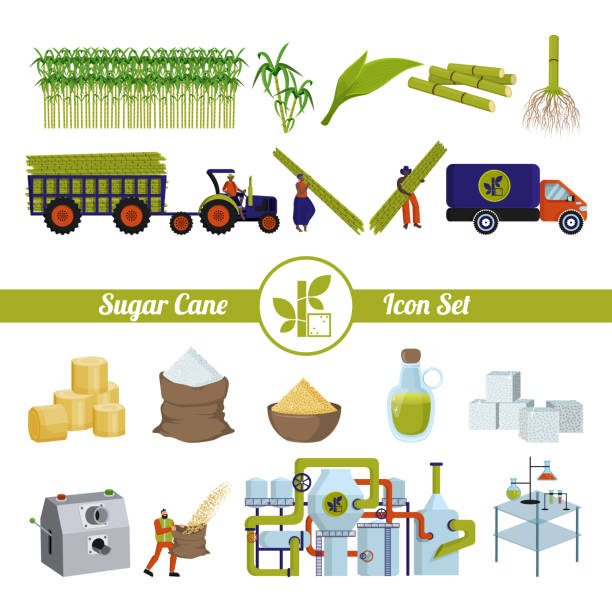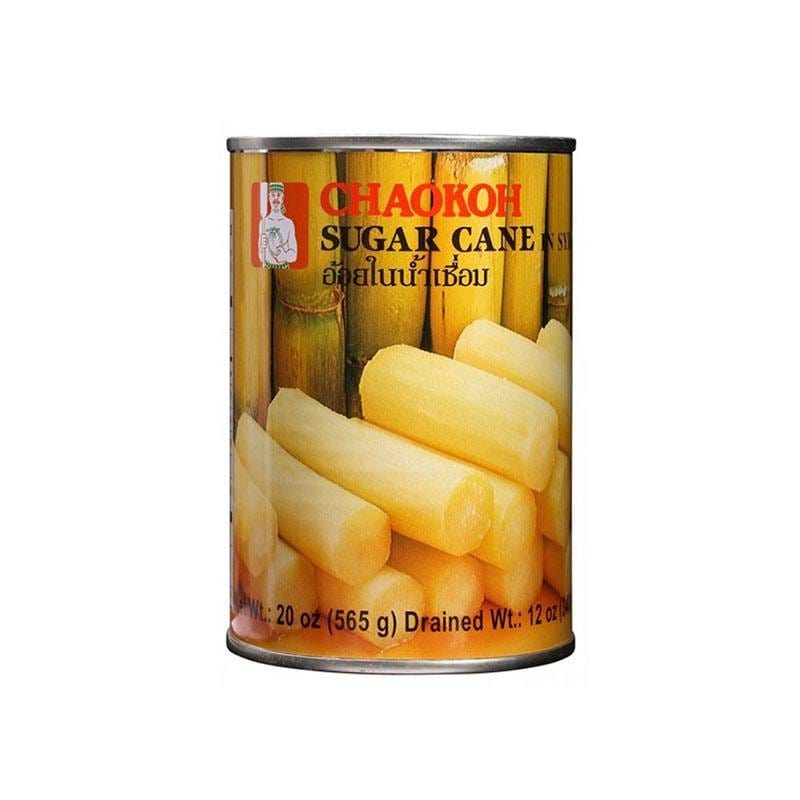Sweeteners Derived from sugar cane products That Define Culinary Experiences
Sweeteners Derived from sugar cane products That Define Culinary Experiences
Blog Article
Unveiling the Manufacturing Tricks Behind Sugar Cane and Its Diverse Variety Of Products
The manufacturing journey of sugar cane is complex and multi-faceted. It begins in the areas, where careful harvesting strategies established the stage for ideal sugar extraction. The procedure involves numerous phases, consisting of juice extraction and refining - sugar cane products. Nevertheless, sugar cane's possible prolongs far beyond plain sweetness. Innovations in processing and lasting techniques are improving its role in modern industries. What lies in advance for this versatile crop? The responses might amaze those interested in its future
The Journey of Sugar Cane: From Area to Manufacturing facility

As sugar cane persuades carefully in the tropical breeze, it starts a transformative trip from field to manufacturing facility. The vivid environment-friendly stalks, rich in sucrose, are cultivated under excellent problems, gaining from enough sunshine and rains. Farmers carefully keep track of the growth, guaranteeing the plants reach their peak maturation, which is essential for taking full advantage of sugar content.Once matured, the cane is prepared for harvesting, where its coarse framework holds the guarantee of sweet items. The trip continues as the stalks are delivered to refining centers, where they undertake a collection of thorough steps. At the factory, the cane is cleaned, shredded, and pushed to draw out the juice. This juice is then cleared up and evaporated, leading the method for formation. Each stage of this journey is crucial, as it eventually establishes the top quality of the sugar and other items obtained from this versatile crop.
Gathering Methods: The Initial Step in Production
Harvesting sugar cane calls for precision and skill, as the timing and method straight influence the quality of the end product. The process commonly begins with figuring out the perfect harvest time, which is crucial; sugar web content peaks prior to the plant gets to complete maturation. Cultivators often count on experience and agricultural indications to determine when to harvest.Two major methods dominate the harvesting landscape: guidebook and mechanical approaches. Manual harvesting, though labor-intensive, enables careful selection of stalks and decreases damage. Employees utilize machetes to reduce the cane near the base, guaranteeing the stalks remain undamaged for processing.Mechanical harvesting, on the other hand, makes use of customized devices to reduce and gather the cane swiftly. While this method substantially raises effectiveness, it may bring about higher levels of particles and lower sugar material. Inevitably, the picked strategy influences not just the quantity but also the top quality of sugar cane supplied to refining facilities.
The Extraction Refine: Unlocking the Sweet taste
The extraction procedure is vital for changing collected sugar cane into wonderful juice. Numerous techniques of juice extraction can substantially affect the quality and return of the end product. Comprehending these methods is important for maximizing the advantages of sugar cane manufacturing.
Harvesting Techniques Described
Launching the sweetness of sugar cane begins with specific harvesting methods that assure maximum yield and top quality. The procedure commonly entails cutting the cane at ground degree, making certain marginal damage to the plant and permitting for regrowth. Harvesters typically use machetes or specialized devices, depending on the scale of the operation. Timing is important; harvesting takes place when the sugar material reaches its optimal, generally during dry seasons. In addition, workers have to be educated to recognize the finest stalks, staying clear of those that are too old or unhealthy. Effective transportation to refining facilities is likewise essential, as delays can lead to sugar destruction (sugar cane products). These meticulous methods inevitably lay the structure for producing top quality sugar and its varied spin-offs
Juice Removal Approaches
Juice extraction is a vital action in transforming sugar cane into its pleasant significance. This procedure generally entails a number of approaches, each designed to effectively extract the sweet liquid from the fibrous stalks. The most typical strategy is milling, where the sugar cane is crushed in between hefty rollers to release the juice. One more approach is diffusion, which utilizes warm water to liquify the sugar from the cane fibers, making it a much more efficient option for large-scale operations. In addition, some producers make use of screw presses, which apply mechanical pressure to remove juice. After extraction, the juice undertakes additional reading clarification to get rid of contaminations prior to more handling. Each technique mirrors the sector's concentrate on making best use of yield and making certain top quality sugar production.
Refining Sugar: Changing Raw Cane Into Granulated Gold
The refining procedure is essential for converting raw cane sugar right into the pure, granulated product consumers acknowledge. sugar cane products. This entails a series of extraction and purification actions to eliminate pollutants, followed by formation and drying techniques that improve the sugar's high quality. Comprehending these techniques discloses the complex makeover from cane to the gold granules that sweeten numerous foods and drinks
Removal and Filtration Refine
A critical phase in the sugar manufacturing journey includes the extraction and purification of juice from fresh harvested sugar cane. This procedure begins with squashing the cane to release its pleasant juice, normally using large rollers or mills. The extracted juice includes not just sugar yet also pollutants, consisting of fibers and mud. To ensure the juice is ideal for additional refining, it undergoes a filtering process. This entails passing the juice through numerous filters and clarifiers to remove solid particles and unwanted products. the original source Chemicals such as lime might be included in assist in the explanation procedure. The outcome is a clear, raw cane juice that functions as the structure for creating polished sugar, prepared for subsequent phases of processing.

Crystallization and Drying Out Strategies
After the removal and purification procedures produce clear raw cane juice, the next action in sugar production is formation. This procedure involves steaming the juice to vaporize water, permitting sugar molecules to develop crystals. As the liquid thickens, it gets to supersaturation, prompting sugar to crystallize. The mixture is after that cooled, promoting more crystal formation. When condensation is full, the sugar crystals are separated from the staying syrup through centrifugation.The last stage includes drying, where the crystals are revealed to cozy air to eliminate residual wetness. This step is necessary, as it ensures the product achieves the desired granulation and rack security. The result is pure, granulated sugar, all set for packaging and distribution.
Past Sweetness: Diverse Products From Sugar Cane
While sugar cane is primarily acknowledged for read this article its wonderful flavor, its flexibility expands far past simple sweet taste. This resilient plant acts as the source for a myriad of products that deal with diverse sectors. Ethanol, stemmed from sugar cane fermentation, plays an important function in renewable resource, acting as a cleaner choice to nonrenewable fuel sources. Additionally, molasses, a by-product of sugar refining, is used in animal feed, in addition to in baking and fermentation processes.Sugar cane's coarse residue, referred to as bagasse, is not wasted; it is changed right into naturally degradable packaging products and works as a biomass fuel resource. Moreover, different sugars and syrups acquired from sugar cane find applications in the food and drink market, adding to flavoring and preservation. The plant's fallen leaves can be utilized for thatching, while its juice is eaten as a rejuvenating beverage in numerous societies. As a result, sugar cane exhibits agricultural possibility past its sweet track record.
Advancements in Sugar Cane Handling
As developments in innovation proceed to improve different industries, sugar cane processing is experiencing a significant change. Modern advancements, including automated harvesting and precision farming, are boosting effectiveness and yield. Drones and sensors keep track of plant health, permitting farmers to enhance watering and nutrient application, ultimately enhancing productivity.In handling facilities, advanced equipment and equipment simplify operations. Technologies such as enzymatic handling and progressed purification methods enhance the extraction of sugar while lessening waste. Furthermore, the fostering of real-time information analytics allows makers to monitor processes very closely, ensuring quality control and lowering downtime.Biotechnology is also playing a crucial function; genetic engineerings boost sugar cane's resistance to parasites and ecological stress factors. These innovations not just add to higher sugar yields yet also help with the production of diverse byproducts from the cane, broadening its commercial applications. On the whole, these technologies are leading the method for a more reliable and sustainable sugar cane processing sector.
The Future of Sugar Cane: Sustainability and Bioproducts
The future of sugar cane production is significantly linked with sustainability and the development of bioproducts. As worldwide need for green choices increases, the sugar cane market is pivoting in the direction of practices that minimize environmental influence. Developments in cultivation strategies, such as precision farming and incorporated parasite management, goal to improve return while reducing source consumption.Furthermore, sugar cane is being checked out as a raw product for biofuels, bioplastics, and other lasting products. These bioproducts not only supply a sustainable choice to conventional fossil fuels and plastics but likewise add to a round economic situation by using waste materials.Research and advancement in biotechnology are leading the way for boosted sugar cane varieties that need much less water and fertilizers, better promoting sustainability. By accepting these developments, the sugar cane sector can protect its future while resolving important ecological challenges, demonstrating its prospective as a keystone of sustainable development.
Often Asked Inquiries
What Are the Ecological Effects of Sugar Cane Farming?
The ecological influences of sugar cane farming consist of deforestation, dirt deterioration, and water air pollution. Additionally, the use of pesticides can harm biodiversity, while monoculture methods minimize environment strength, presenting long-lasting sustainability difficulties for agricultural techniques.

Just How Does Sugar Cane Compare to Other Sweeteners Nutritionally?
Sugar cane, rich in carbohydrates, offers power however does not have vital nutrients compared to options like honey or maple syrup, which offer vitamins and minerals. Its high glycemic index additionally elevates concerns over blood glucose spikes.
What Are the Health And Wellness Perks of Consuming Sugar Cane Products?
The wellness advantages of consuming sugar cane products consist of enhanced digestion, boosted power degrees, and potential antioxidant residential or commercial properties. In addition, they might sustain hydration and offer vital nutrients, adding favorably to total wellness.
Exactly How Is Sugar Cane Waste Utilized After Handling?
After handling, sugar cane waste is utilized in numerous methods, consisting of biofuel manufacturing, animal feed, and natural plant foods. This sustainable strategy lowers ecological influence while making best use of source effectiveness within the sugar market.
What Are the Historical Beginnings of Sugar Cane Farming?

Report this page